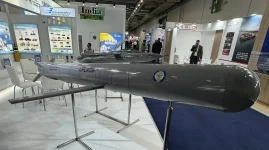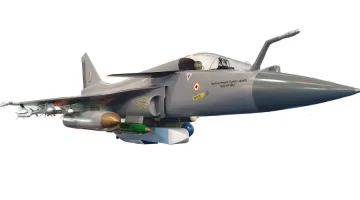Overall,
it is some kind of adjusted requirements so as to include Indigenous engine and because of its lower thrust wihtout after burner, there is an adjustment to the speed specifications and in order to make sure RCS is less than detectable limit by radars installed in adversary proucts, speed is adjusted. Human supporting system is removed so given scope for additional weight and despite of it, its range is far lesser, so its range is not kept clear, but the weight of the weapons is a significant when compared to dead weight, there is a flexibiity to replace few weapons with additional fuel and avoiding continuous burning makes it go with varying speeds to achieve longer ranges that can cover entire China.
In order to make it appear different from AMCA, lot of effort is made by scientists to convince for CCS approval.
If there are few more alternative products with other engines like AL-31FP, AL-4xxx engines then our future requirements will give an edge.
In fact, we also need designs , to replace engine and enhance internal fuel capacity by 100kg in Tejas and AMCA with AL-31FP engine, will pave a way for flexibility and robust safety to our future requirements.
From efficiency point of view, engines used in Rafael, F-xxx engines from GE do have certain key advantages, especially in terms of CCS, heat signature.
However , they lack the bulk produceabiity and makes the final product being very few and completely unviable option for long run wars. It may be suitable for too short wars but world dynamics is completely unpredictable and we cannot keep IAF from being too vulnerable for long term wars.
Kaveri, being indigenous, with its dry and non-dry versions, are reaching thrust levels near to other engines, however they lack RCS and heat signatures. In order to remove this limitation, the above attempt to remove after burner and allowing engine to become hot it is modeled as unmanned and engine is inside and with outer covers, the issue of heat signature is addressed and with varying load, several possibilities are modeled. This is a clever approach, to have a product, which is completely Indigenous and have capabilities comparable for certain war time situations. Even though, it is also not bulk produceable, but we can enhance its bulk produceability to a better level as it is Indigenous and entire funding will circulate Indian industries and room around Indian Banking systems, so wont create any problems of financial viabilities for bulk production.
AL-31FP engine, where is also having little issues of RCS and do have heat signature issues similar to Kaveri, is a Russian technology and India already acquired 80% of ToT and HAL has produced complete product by utilizing a KIT provided by Russia which contains certain metalic sheets whose strength and durability are basic reason behind its engine thrust capabilities. This engine strenght is far higher than Indigenous Kaveri as well as any engine produced from USA/France/UK/China. More important feature is that, cost of the KIT from Russia is neglible when compared to the cost of GE engine we purchase. With the cost of one GE engine, we can purchase 100 Russian KITs. So, with same amount of foreign exchange we spent on one engine for Tejas/AMCA/Ghatak UCAV, we can produce 100 products. Remaining money being spent on pure Indigenous products, money is anyhow, is within Indian banking system, so not an issue when we look at macro level finances. More attractive feature of thsi engine, is that, it is bulk produceable. Within a couple of years, we can produce 1000 engines easily. Very suitable to India in dealing wth long run war. So, having a produce using this engine is very helpful in strategic needs. However, current Government , did not prefered yet, this strategy.
Next variant of Russian engine in AL-FP class, is the engine, what Russia wants to offer, but again we need to purchase from Russia including ToT. Its performance when compared to AL-31FP engine is just 10% incremenet and few design changes and flexibilities in terms of maintenance cost and designing. Paying huge money again to this engine, without utilizing the money paid for previous engine effectively is a minus point to this engine.
Because of differences in the intentions between India and Russia with India preferring to stick to AL-31FP while Russia willing to enforce AL-4xFP engine, and also existence of prolonging Russia-Ukrainian war, supply of KITS for AL-31FP engine is slow.
Existing practise, is , India is producing new engines for the existing Su-30 aircrafts. These aircrafts were suitable 30 years before and are mere 4th Generation and vulnerable even to deal with Pakistan, keep aside China. India has more than 1000 such products. These products are backbone of existing IAF strength and without them, India beocmes vulenrable. All other products discussed before, are mere few in number and they are just for stretegic advantage for very very short term wars and purely useless war massive drone based attacks or massive torpedo based attacks.
Again these 1000 aircrafts are Russian engines (AL-31FP). and their life time is coming to shelf in less than a decade.
Since, Indian technology is not yet matured in Tejas/AMCA/Ghatak and also we see too much of vulnerability from USA in producing and providing GE engine in required quantity and change of stand from France in supplying engines used in Rafel to India due to the interference from China in recent years by providing financial support to France with a precondition to not to support India make Indian situation in engine availability to a vulnerable situation.
For now, India wants to rely on Su-30 products. Cleverly and luckily India acqured capabilities to enhance Su-30 into Su-30MKII and super sukoi, which are 4.5 Gen capabilities and makes them not vulnerable from attacks from Pakistan IAF and also can deal with many products from China. Since we have 1000 products and with 1000 engines of AL-31FP engines can enhance the life time of existing Su-30 fleet for next 30 years and our ability to enhance Su-30 to Su-30MK Super Sukoi, will make our capabilities on par to deal with Pakistan and China together!!!.
Right now, India has given order to HAL for 500 AL-31FP engines for Su-30 after HAL produced 1 engine completley with Indigenous technolgoy but depends on Russian KIT (which is 20% critical components).
Right now, IAF given order to HAL for 500 products and in case Russia will not delay in providing them, then India may give additional order of 500 more such engines. Already India also given orders to convert some 100 Su-30 engines to Su-30 Super Sukoi, the work is still in progress. We can feel safe in this progress as entire work is done by Indian companies and already few are converted successfully and gone through critical testing for which India is famous.
In case, Russia wants to help India and supply those KITS for 1000 KITS in next two to three years then which in turn will get an assurance to have 1000 Super Sukois in next 10 years, then Indian Government will be in a position to give orders for additional AL-31FP engines for a possible newer products similar to Tejas/AMCA/Ghatak using AL-31FP engines, by that time, already HAL will get the experience of producing 1000 AL-31FP engines.
But Russia, dont want to supply these many engines for AL-31FP but wants to encourage additiona purchase from India for its next variant. This is where, our entire trauma depends on. Even though, we say, Russia is the most trusted partner, now we need to chech, how much trust really Russia is.
Already we have seen,bitter expriences from USA, in terms of its intentinal delays in providing GE engines in the name of one or other reasons. Also, Russia has a legitimate outspoken reason (Ukraine conflict) to provide a good reason to delay providing those kits to make Indian situation more vulnerable to have an edge in its lobbying points to force India to shift to AL-4xFP variant.
For my analysis, it is a litmus test to Russia, if Russia is a truely reliable partner, by checking when it has supplied all 500 kits and next 500 more kits.
if it supplies them in next 2 years, then I will consider Russia as a truely reliable partner. Otherwise, Indian statements on Russia, about the trust factor is just similar to what Pakistan says about China on trust and support factors, far being from real truth.
It is also very sad to see, Indian scientists, have not yet achieved their real objective to produce Metal Alloys to produce lengthy sheets of higher dimensions to replace Russian KIT with Indigneous metalic sheets.
Our reserach is still limited to produce very small size. Our ambitions to become a super power, in my view, solely lies on , Indigenous capability to produce those Metallic Alloy sheets , what we import from Russia, with a replacement with alternative metal alloys from pure Indigenous technology.
Sadly, no Government, is spending huge amount on this field, even when we know thisis a crucial technology.
Also, India not yet started its engine policies towards Indigenous bulk produceable engine options to produce lower characteristic products but in bulk quantities.



